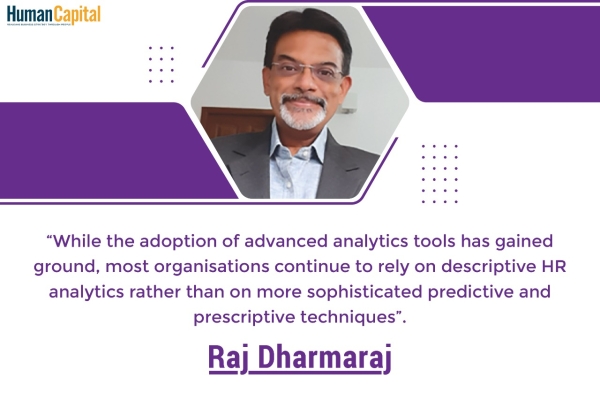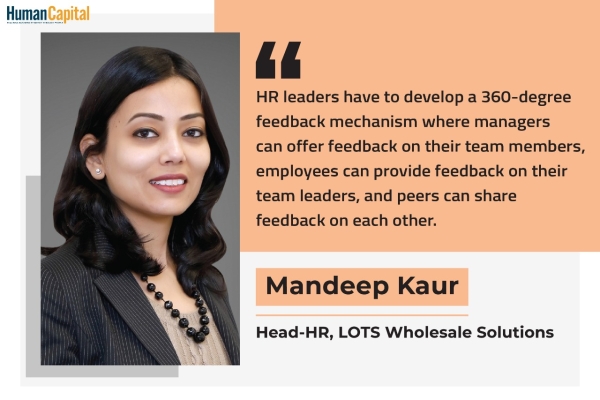As HR professionals, we need to broaden our horizons and be ready for what's next. The future which was expected ten years down the line seems to be just around the corner now.
Amidst the coronavirus outbreak, organisations are focusing on new ways of working and devising business strategies to cope with the global health crisis. This is not just a health crisis but also a threat to our economic stability. However, this phase has a silver lining: Many people are working from home and keeping themselves engaged by following their passion. No more must they endure the hustle and bustle of traffic and invest hours in commuting. Working professionals are a bit more relaxed and investing their time in upskilling themselves by online learning, reading more books, and navigating through social networking sites like LinkedIn, etc.
“Gig workers” have become a buzzword lately, and Gig work is being visualised as the “future of work” by 2023. A report by Noble House revealed that nearly 45% of CHROs surveyed wanted to hire gig workers to supplement the skills of the existing workforce, 39% would do this to reduce cost, and 10% to fill temporary vacant positions.
With COVID-19 hitting the world, the distant future of work seems to be arriving earlier, wherein people might think of picking up jobs that are not full-time, allowing them to follow other interests and passions. Home spaces will be the new office spaces, and we can expect the workforce to be more learned as people are focusing a lot on their self-development.
From the job market standpoint, we might expect a decreased rate of hiring in tourism, aviation, and the hotel industry. On the contrary, according to Forbes’ review, we are likely to witness an increasing hiring trend in pharmaceuticals, technology, biotechnology, medical research, teleworking software, tech support, etc.
We are currently living in unprecedented times, surrounded by uncertainties, and HR is grappling with the new code of work, which talks about remote working and dealing with the economic slowdown. Design thinking is the key to success in these challenging times, and as HR professionals, we need to redesign the processes woven throughout the gamut of HR, ranging from hiring to retirement. We need to act as enablers and align ourselves with the business requirements instead of just thumping the waves.
If you are in the talent acquisition arena, the world is – and will continue – to change for you during and post COVID-19. The new normal will be completely different from what the talent market used to be. To manage the situation at hand, we need to find out the answers to the following questions:
◆ How do I reach out to the potential candidate?
◆ How do I ensure that the candidate experiences a seamless interview process?
◆ How do I ensure that post-joining activities are not challenging for the employees?
The answer seems to be quite simple: Digitise your recruitment and onboarding process. A recent article in Forbes talks about how the majority of legacy systems cannot see candidate potential because they are designed for transaction scale. Bridging the gaps between legacy talent management systems, virtual recruiting events, and AI-based talent management platforms will place the candidate potential at the centre of their architecture.
A digital solution should focus on the following key actions:
◆ AI-enabled candidate profiling
◆ Being linked with all the hiring source
◆ Driving engagement, collaboration and communication with the candidates
◆ Managing talent pipeline and creating talent relations by acting authentically
◆ Looking for adjacent skills and then suggesting upskilling for the employees, thereby sustaining the talent
◆ Putting the business managers in the driver’s seat for hiring.
The current crisis cycle has repeated several times in the last two decades when the dot-com bubble burst in 2000, NASDAQ tanked in 2001, the 9/11 attacks happened in the US, and when SARS hit Asia and Toronto. Many organisations felt they had no choice but to lay off experienced and talented professionals. Currently, there is a large and expanding pool of talent available in the market. Instead of hitting the panic button whenever the stock market crashes and the economy spirals downward, it is important to have a long-term outlook.
.PNG)
Are you comfortable working with dispersed colleagues?
Trending
-
SBI General Insurance Launches Digital Health Campaign
-
CredR Rolls Out 'Life Happens' Leave For Its Employees
-
Meesho Announces 30-Week Gender-Neutral Parental Leave Policy
-
Microsoft Unveils Tech Resilience Curriculum To Foster An Inclusive Future
-
60% Indian Professionals Looking For Job Change Due To COVID: Survey
-
SpringPeople And Siemens Collaborate For Digital Transformation Push
-
86% Professionals Believe Hybrid Work Is Essential For Work Life Balance: Report
-
Almost 1 In Every 3 People's Personal Life Affected Due To Work Stress
-
Meesho Rolls Out Reset And Recharge Policy For Employees
-
80% Of Talent Leaders & Academics Say Pandemic Changed Skill Needs For Youth: Report
-
Hero Electric Rolls Out 'Hero Care' Program For Employees
-
Human Capital In Collaboration With ASSOCHAM Hosts Virtual Conference
-
IKEA India, Tata STRIVE Collaborate To Create Employability And Entrepreneurship Opportunities
-
SAP India, Microsoft Launch Tech Skilling Program for Young Women
-
DXC Technology, NASSCOM Collaborate For Employability Skills Program
-
Lenskart To Hire Over 2000 Employees Across India By 2022
-
Mindtree Launches Learn-and-Earn Program
-
Tata AIA Extends 'Raksha Ka Teeka' To Its Employees
-
Swadesh Behera Is The New CPO Of Titan
-
NetConnect Global Plans To Recruit 5000 Tech Professionals In India
-
Hubhopper Plans To Hire 60% Of Indian Podcasters By 2022
-
Corporate India Needs More Women In Leadership Roles: Report
-
Aon to Invest $30 Million and Create 10,000 Apprenticeships by 2030
-
Tech Mahindra Launches ‘Gift a Career’ Initiative for Upskilling of Youth
-
40% Women Prefer Flexible Working Options in Post-COVID World: Survey
-
3 out of 4 companies believe they can effectively hire employees virtually: Report
-
Vodafone , CGI and NASSCOM Foundation launch digital skills platform
-
Odisha: Bank, postal employees to deliver cash for elderly, differently-abled persons
-
Skill India launches AI-based digital platform for "Skilled Workforce"
-
Hiring activity declines 6.73% in first quarter: Survey
-
70% startups impacted by COVID-19 pandemic
-
Bajaj Allianz Life ropes in Santanu Banerjee as CHRO
-
Over 70 Percent MSMEs look at cutting jobs to sustain businesses
-
93 Per Cent employees stressed about returning to office post-lockdown
-
Johnson & Johnson India announces family benefits for same gender partners
-
Indian firms turning friendly towards working mothers
-
Welspun India names Rajendra Mehta as new CHRO
-
Wipro partners with NASSCOM to launch Future Skills platform



Human Capital is niche media organisation for HR and Corporate. Our aim is to create an outstanding user experience for all our clients, readers, employers and employees through inspiring, industry-leading content pieces in the form of case studies, analysis, expert reports, authored articles and blogs. We cover topics such as talent acquisition, learning and development, diversity and inclusion, leadership, compensation, recruitment and many more.
Subscribe Now













































Comment